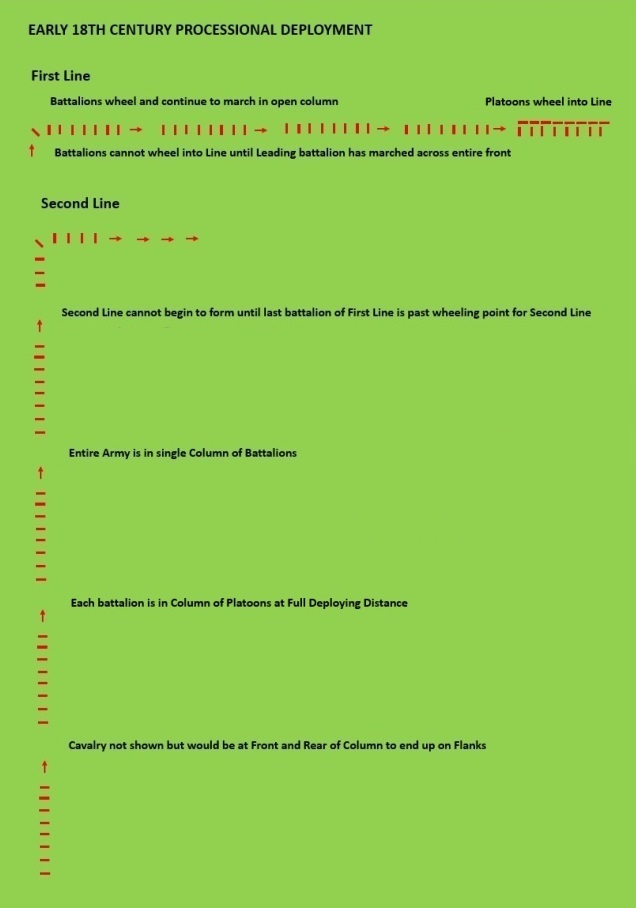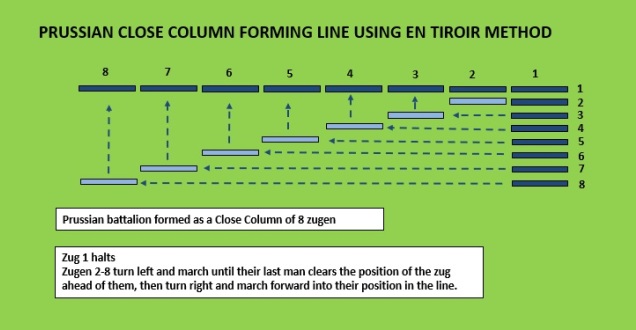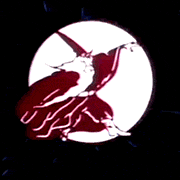|
Marshal Murat's Closet: A reality show where contestants design and sew the most fashionable uniforms, then wear them while standing at attention under fire.
|
|
|
|

|
| # ? Jun 3, 2024 13:54 |
|
KYOON GRIFFEY JR posted:Just be careful with the word choice around naval architects there, those are the guys who actually design the ships and the French certainly had the best in the world. The British spent a lot of time copying French designs, very notably both the large and small 74s. Eh, I'd have to look up it up for details but Rodger spends a LOT of time arguing both that "French naval architects weren't as revolutionary or impressive as they were commonly assumed to be," and that "the idea that British or French or Spanish ships were better or worse is somewhat flawed." To touch on the latter, since I remember those arguments better, he specifically notes that each fleet designed their ships for the missions they were intended for. The British anticipated needing to send ships on long-range cruises and long-term blockades in all weathers, so they were designed to be weatherly and strongly built with large cargo holds. The French meanwhile were anticipating that their fleets would be blockaded, but could strike out in favorable conditions when the British fleets were dispersed by weather or other factors to try and defeat them in detail, so they designed ships that sail very well and very quickly in good weather and light airs but which had poor seakeeping qualities and small cargo holds, which meant that British captains tended to complain about captured French ships as they weren't particularly good at the kind of things British captains were asked to do. Meanwhile the Spanish during the 18th century designed their fleet not so much to win wars as to be a cost-effective deterrent against their colonial holdings, being robust, relatively easy to maintain and relatively cheap to construct so that they could have strength assembled at enough critical ports to make invading the Spanish Empire a costly headache without breaking the budget. He doesn't go into the Spaniards in as much detail but Rodger gives the impression that the Spanish had a much more coherent vision for what they wanted out of their navy and a better plan for achieving that than did the French, which he represented as not really being entirely sure what they wanted their navy to do and not being certain how to achieve it. Edit: Also apparently there was a whole thing where French designers insisted that the ship's timbers flexing and letting in some water while under way was a good thing that made their ships faster. It didn't and it wasn't, and it degraded their ships faster. Tomn fucked around with this message at 17:04 on Jun 7, 2021 |
|
|
|
It's worth noting that even where the French were attempting attack in column, doctrine was to mass artillery at the point of attack and have anything up to multiple full battalions of skirmishers screening the column and disrupting the enemy at the point of attack. A lot of thought was put into maximising the effectiveness of what they had available.
|
|
|
Cessna posted:Marshal Murat's Closet: A reality show where contestants design and sew the most fashionable uniforms, then wear them while standing at attention under fire. I'd certainly watch this. Somebody make it happen please.
|
|
|
|
|
I'd pay to see a well done mini-series about Dumas.
|
|
|
|
Alchenar posted:It's worth noting that even where the French were attempting attack in column, doctrine was to mass artillery at the point of attack and have anything up to multiple full battalions of skirmishers screening the column and disrupting the enemy at the point of attack. A lot of thought was put into maximising the effectiveness of what they had available. One weird trick to defend against that, reverse slope defense.
|
|
|
|
Cessna posted:Okay, yeah, agreed. Unless you have that column in position where you can just go "right face" and go to line - and the odds of that are pretty much nonexistent - moving from a column to a line is going to be put you in a vulnerable spot until the maneuver is complete. Do we know how they did this? Would the column turn and march parallel to the enemy line to convert itself into a line? Does the column "unfurl" itself such that the guys in front become the centre, and it spreads out to either side? Does the whole column try to dash through a hole in the enemy line and avoid having to re-orient by attacking on a flank? I know nothing about infantry columns other than you can use them to attack somehow
|
|
|
|
PittTheElder posted:Do we know how they did this? It depends on the army, era, etc, but there are plenty of surviving drill manuals. 
|
|
|
|
Cessna posted:Marshal Murat's Closet: A reality show where contestants design and sew the most fashionable uniforms, then wear them while standing at attention under fire. Tell me more
|
|
|
|
I'm looking for a good book on life in the Navy in WWII, or around that period (say, dreadnaught era through end of WWII). Something lower level: not necessarily focused on tactics or technical details, but perhaps a memoir or narrative. Preferably US, but any country's Navy is fine. Any suggestions welcome.
|
|
|
|
Cyrano4747 posted:I'd pay to see a well done mini-series about Dumas. That would be pretty baller. But there is probably enough for multiple seasons with him. I would also enjoy the rage it would provoke in certain people.
|
|
|
|
vuk83 posted:One weird trick to defend against that, reverse slope defense. You still need control of the ridge in order to to time your counter over the top right, otherwise you end up with a French regiment running downhill at you.
|
|
|
|
PittTheElder posted:Do we know how they did this? Would the column turn and march parallel to the enemy line to convert itself into a line? Does the column "unfurl" itself such that the guys in front become the centre, and it spreads out to either side? Does the whole column try to dash through a hole in the enemy line and avoid having to re-orient by attacking on a flank? https://rodwargaming.wordpress.com/miltary-historical-research/military-historical-research/the-evolution-of-tactics-in-the-18th-century/ I believe this was posted ITT a while back, had to do some weird stuff with keywords to get to it from my memory. It covers a few things and is not specifically on converting from column to line so the stuff about that is interspersed, BUT it does have very helpful diagrams for all of them.
|
|
|
|
HisMajestyBOB posted:I'm looking for a good book on life in the Navy in WWII, or around that period (say, dreadnaught era through end of WWII). Something lower level: not necessarily focused on tactics or technical details, but perhaps a memoir or narrative. Preferably US, but any country's Navy is fine. Any suggestions welcome. My go-to recommendation (offered several times in versions of this thread) is Three Corvettes by Nicholas Monsarrat. It's a compliation of what were originally three different books, each being essentially an expanded diary written in real time during the war. The book(s) covers 1940-1943, as Monsarrat goes from a junior officer on a Flower-class corvette on the North Atlantic, to an executive offer on a Kingfisher-class sloop in the North Sea to commander of a different Kingfisher-class. The narrative varies from random isolated moments, anecdotes and thoughts to detailed descriptions of action to longer more introspective narratives about life and sea and the progress of the war. Each 'volume' closes with a chapter in which Monsarrat summarises what he and his crew's thoughts and feelings on the navy, the war and a host of other matters are at the time. It's full of very valuable contemporary insights - it's not an impartial history (or even a partial one), or a memoir written in one go after the event, it's a slightly polished series of jottings made virtually in the moment. Monsarrat's always intended for the notes that ended up as Three Corvettes to also be the basis of a bigger work of fiction. This became his famous novel The Cruel Sea which is significantly more dramatised but read one after the other and you can see where he's drawing on direct experiences.
|
|
|
|
Did someone say first-hand accounts of life aboard warships ? Let me check my shelves.... Subchaser by Stafford is the story of a young officer commanding a very small ship from early days patrolling Florida and the Caribbean, through Torch and Sicily. https://smile.amazon.com/Subchaser-Bluejacket-Paperbacks-Edward-Stafford-ebook/dp/B009SC1RZ8 Motor Gunboat 658 by Reynolds covers his years on the 658 boat (a Fairmile D class gunboat) in the Med as second officer and then CO. https://smile.amazon.com/Cassell-Military-Classics-Gunboat-Mediterranean/dp/0304361836 Stand By For Action by Donald covers his time in Sloops and Destroyers from Norway to Normandy. https://smile.amazon.com/Stand-Action-Memoirs-Small-Commander-ebook/dp/B00SS5XKXS Tin Can Sailor by Calhoun is the memoir of an officer on USS Sterrett, including at the big brawls around Guadalcanal. https://smile.amazon.com/Tin-Can-Sailor-1939-1945-Bluejacket-ebook/dp/B00H6UODQO/ Ship of Ghosts is a history of the USS Houston from her prre-war life as Roosevelt's yacht to her loss in the SW Pacific in early 1942. The narrative follows the crew into captivity and forced labor on a railroad in Burma. https://smile.amazon.com/Ship-Ghosts-Houston-Legendary-Survivors-ebook/dp/B000UZQIJC/
|
|
|
|
Thank you both! I'll check these out!
|
|
|
|
HisMajestyBOB posted:I'm looking for a good book on life in the Navy in WWII, or around that period (say, dreadnaught era through end of WWII). Something lower level: not necessarily focused on tactics or technical details, but perhaps a memoir or narrative. Preferably US, but any country's Navy is fine. Any suggestions welcome. I'll second the recommendation for Three Corvettes, and add on a recommendation for the second volume of Monsarrat's memoirs, H.M. Frigate. There's some other good memoirs out there too that cover less well-known areas of the Navy. Mike Crosley's They Gave Me a Seafire is a great memoir from a Fleet Air Arm pilot, describing, amongst other things, his time in the Mediterranean, flying spotting sorties for the D-day bombardment, and in the Far East. It's fairly detailed, engagingly written, and pretty comprehensive as to the experiences of Britain's carrier force. Stand By for Action by William Donald is a memoir from a destroyer captain, serving mainly on the convoys running up and down the East Coast of England. Its an interesting look at this often unsung, but vital, convoy war. Ashe Lincoln's Secret Naval Investigator describes the work of the RN's mine clearance teams, and their work discovering, defusing and investigating new German mines (and other weapons). It's tense and thrilling, but not really representative of the navy as a whole. For a WW1 memoir, the memoir of Alexander Grant, the gunner of HMS Lion at Jutland is fairly vital in understanding why so many British battlecruisers blew up (and why Lion didn't). Grant reveals an almost negligent safety culture around propellants; this carelessness meant that flash fires from hits could easily reach magazines. Unfortunately, it hasn't been published in full, but the relevant sections of it can be found here.
|
|
|
|
HisMajestyBOB posted:I'm looking for a good book on life in the Navy in WWII, or around that period (say, dreadnaught era through end of WWII). Something lower level: not necessarily focused on tactics or technical details, but perhaps a memoir or narrative. Preferably US, but any country's Navy is fine. Any suggestions welcome. Japanese Destroyer Captain is another memoir that's at leadership level, not so much a seaman's experience, but it's excellent. It's by Tameichi Hara who was one of the destroyer captains in the Guadalcanal campaigns, and it's basically a memoir of him slowly realizing they are losing first the campaign and then the war. Destroyers and night action were a huge part of the Solomons battles and it's an area that went from a big Japanese advantage (they were highly trained at night action) to a huge US advantage as the US learned how to use radar better and eventual master it for things like radar-directed fire control. Hara describes the combat and tactical action well but it's almost more about the mindset shift of "we are the biggest badasses in the Pacific," to "uh oh that wasn't great", then "how is this happening," to eventually "we are in real trouble." He was one of the few Japanese destroyer captains to survive the Solomons so it's a unique book and memoir. It's maybe more technical and tactical than "this is what life was like on the boat" if that's what you wanted, but it's such a fascinating perspective that I can't help but recommend it.
|
|
|
|
Cessna posted:It depends on the army, era, etc, but there are plenty of surviving drill manuals. What the hell were people doing that weren't this guy?
|
|
|
|
I assume any maneuver like that needs to account for the fact that a bunch of the people in it just got shot and can't go to their theoretical positions
|
|
|
|
Fine, L., Howard, C., Howard, M. help shed some light on the pre-Guibert formation of a line.
|
|
|
|
I assume the ring was stolen by a corporal?
|
|
|
|
piL posted:What the hell were people doing that weren't this guy? The column would swing into line like a door on a hinge. That is the easiest way to form into line from column unless you've been practising intensely.
|
|
|
|
You could also fill out from left to right or vice versa instead of spreading out to either side from the centre. I'm not too familiar with the 18th century but certainly in the 17th century hardly anyone was trying to transition from column to line on the battlefield itself - that was certainly something you would want to do beforehand when the army was arranging itself.
|
|
|
|
MikeCrotch posted:You could also fill out from left to right or vice versa instead of spreading out to either side from the centre. My understanding is that the main innovations in the 18th century were a series of drills that let you manoeuvre on the battlefield and react dynamically, as opposed to deploying into line at the start of the day and then letting things play out.
|
|
|
|
piL posted:What the hell were people doing that weren't this guy? Like 4 posts up:      The Traversierschritt is funny because the OG form of it in the Prussian military had people march diagonal - as in face forward and cross your right leg over your left when you were stepping forward. Other countries looked at this and went "hm" and and their units wheel 45 degrees, march to the location, then wheel 45 degrees again.
|
|
|
|
Tomn posted:Eh, I'd have to look up it up for details but Rodger spends a LOT of time arguing both that "French naval architects weren't as revolutionary or impressive as they were commonly assumed to be," and that "the idea that British or French or Spanish ships were better or worse is somewhat flawed." Thanks, this was interesting!
|
|
|
|
Tulip posted:The Traversierschritt is funny because the OG form of it in the Prussian military had people march diagonal - as in face forward and cross your right leg over your left when you were stepping forward. Other countries looked at this and went "hm" and and their units wheel 45 degrees, march to the location, then wheel 45 degrees again. Thank you for answering all the questions the term "oblique step" raised and revealing it was exactly as ridiculous as I had dreamed. Wonder what the casualty rate was for soldiers stumbling over their feet and bayonetting others.
|
|
|
|
Saukkis posted:Thank you for answering all the questions the term "oblique step" raised and revealing it was exactly as ridiculous as I had dreamed. Wonder what the casualty rate was for soldiers stumbling over their feet and bayonetting others. I dunno but we were taught it in the Canadian Forces.
|
|
|
|
Raenir Salazar posted:I dunno but we were taught it in the Canadian Forces. https://www.youtube.com/watch?v=7-2jLLMdEBw
|
|
|
|
Not only are you gonna get shot at, you're gonna have to do a silly walk beforehand. That's the authentic Prussian subject experience alright.
|
|
|
|
Saukkis posted:Thank you for answering all the questions the term "oblique step" raised and revealing it was exactly as ridiculous as I had dreamed. Wonder what the casualty rate was for soldiers stumbling over their feet and bayonetting others. probably not that high as you would drill guys until they could do it in their sleep or blind drunk or both. drill drill drill drill drill.
|
|
|
|
Tulip posted:Like 4 posts up: Yeah I saw it. I just thought people should have arrived at "guys on the left go left guys on the right go right" before walking at a 45 degree angle or wheel about in front of people actively pursuing your demise.
|
|
|
|
One of those weird interesting things about Military History is that there's this process of evolution from everyone shuffling around in groups and forming a shieldwall when told to, to the full drill manual of 1850. 'How do people walk properly' is actually an incredibly complex problem that a huge amount of time and effort was spent on over a few hundred years.
|
|
|
|
You wouldn't even need to wheel the battalion 45 degrees. You could just have every individual solider rotate 45 degrees relative to the line and march so that the battalion remains parallel while each individual's shoulders are angled. Again would require drilling but that would have to be way easier to drill and more intuitive; oh and more able to absorb weak links.
|
|
|
|
CommonShore posted:You could just have every individual solider rotate 45 degrees relative to the line and march so that the battalion remains parallel while each individual's shoulders are angled. It's called "Oblique," you learn it in boot camp.  Edit: For some reason it's pronounced "ob-like," not "ob-leek." (jarheads are dumb) Cessna fucked around with this message at 15:38 on Jun 8, 2021 |
|
|
|
Cessna posted:It's called "Oblique," you learn it in boot camp. I've always heard that Marines are stupid, but I've never truly believed it till now
|
|
|
|
Oh, you have no idea. Want a job where you can watch a grown adult yell at another grown adult for having trash in a trash can in their own home? Want to get to a point in your life where you don't even notice how strange that is? (I think "ob-like"is easier to shout in cadence, but who knows.)
|
|
|
|
I just realized that I've been making a lot of assumptions about why all of this marching/deployment stuff matters for commanders and how it can contribute to success and failure on the field. But Alchenar posted:One of those weird interesting things about Military History is that there's this process of evolution from everyone shuffling around in groups and forming a shieldwall when told to, to the full drill manual of 1850. 'How do people walk properly' is actually an incredibly complex problem that a huge amount of time and effort was spent on over a few hundred years. So just to make sure that I'm not working from false assumptions... Does this matter because less efficient models of field deployment can 1) Leave certain batallions exhausted from walking huge distances to get into place and 2) Leave a still-deploying army and formation (perhaps catastrophically) vulnerable to attacks from a faster prepared and more efficient enemy Am I wrong on these? Am I missing anything?
|
|
|
|

|
| # ? Jun 3, 2024 13:54 |
|
Cessna posted:It's called "Oblique," you learn it in boot camp. Giving me some bad memories here except mine would be in french.
|
|
|














 Yes, it's like a lava lamp.
Yes, it's like a lava lamp.



























